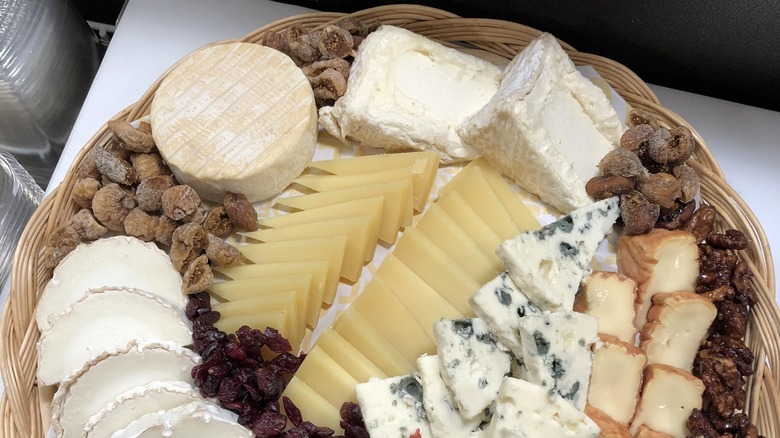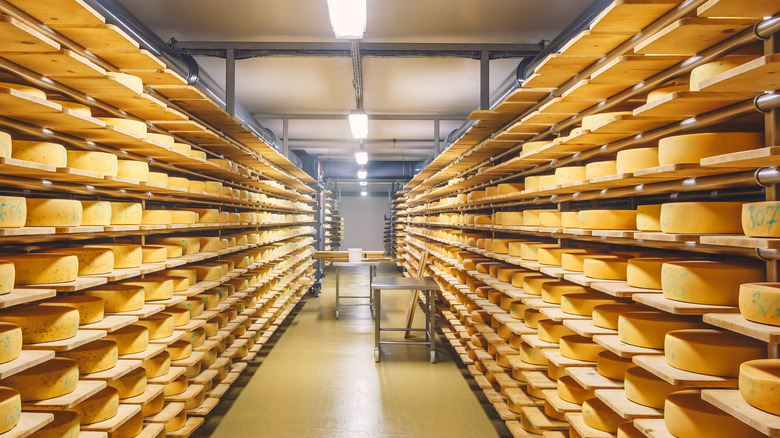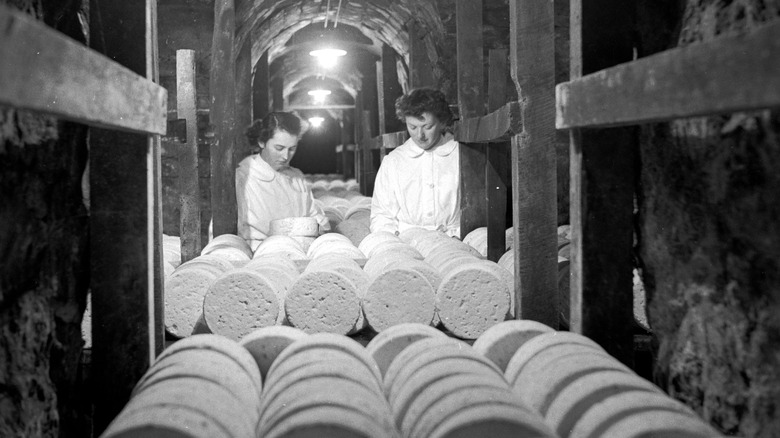The Unique Place Wegmans Cheese Is Made
There are many reasons Wegmans is beloved, as noted by The Washington Post, including employee satisfaction, fresh food, and massive locations. Wegmans also has house-owned, private brands, and this self-reliance allows it to keep prices low.
Nothing's perfect, of course, and there are detractors of Wegmans, who claim it sold out after achieving success, for example. Yet, on the whole, shoppers often view Wegmans as a quality one-stop shop.
Wegmans has more than a hundred stores across seven East Coast states, per its official website. Its largest locations have anywhere from 50,000 to 70,000 items for sale, including thousands of organic options. Wegmans' wares include fresh-caught seafood, made-to-order sushi, ripe produce, specialty coffee, warm desserts, and more. And did we mention that the company also ripens Wegmans-brand cheese in state-of-the-art cheese caves that are made to mimic European cheese caverns? Wegmans is full of surprises, and its 12,000-square-foot "cheese cave" building in Rochester, New York is one of them (per Culture Cheese).
Wegmans' cheese caves
Per Wegmans, the grocery chain has half a dozen "caves" dedicated to ripening soft and washed-rind cheeses, as well as a room specifically set aside for brie. Each one is climate-controlled, designed to match the needs of their cheese (per Culture Cheese).
According to The Washington Post, each cavern can hold several thousand pieces of cheese at a time. Having different chambers also avoids cross contamination and allows the flavors to remain pure. The cheeses, once brought out for sale, are misted, too, to maintain that dank cavern aura.
Such a large-scale, commercial cheesemaking facility in America was fairly groundbreaking at its inception, The Washington Post reported. And it appears to have been worth it. This step only furthered Wegmans' strategy of providing fresh, affordable, and personalized food to its customers. Even though Wegmans' cheese caves aren't strictly traditional, the products coming out of those caverns have won multiple awards. So, cheese aficionados might find exactly what they're looking for at Wegmans the next time they're whipping up a cheesy recipe.
European cheese caves
Europe's cheese caves are famous, but if you're not a cheese monger, you might not be aware of their reputation. Per Wegmans, European cheese caves are quite simply the caverns where world-famous cheeses are stored as they develop their rich taste. How did such an odd practice start?
Cheesemaking has long been intertwined with European culture. According to the National Historic Cheesemaking Center, cheese was around as far back as at least ancient Greece. It may have accidentally been discovered when milk was kept in bags made from animal stomachs, where the liquid coagulated.
Clearly, people of old couldn't be picky about where they kept their food. So, it's not too unexpected that European countries such as France and Italy ended up storing their Camembert, Gorgonzola, and Roquefort in cold, damp caverns (per Culture Cheese). Ideal for aging cheese, these environments have been replicated via technology on other continents, including North America.


